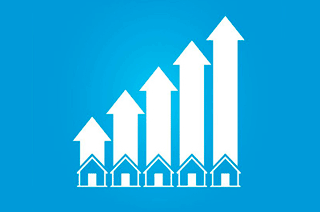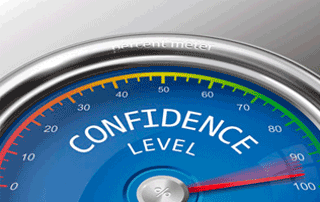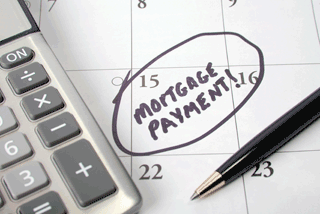Quote of the Week
“Lockdowns in response to the virus have prompted more Aussies to re-assess their housing needs. With more time spent at home for both leisure and work, some Aussies are looking for bigger homes. Others are coming to the belief that the layout of their home needs changing.”
CommSec chief economist Craig James
Impetus Builds In Property Markets
 Momentum is building on housing markets nationwide, with auction clearance rates strengthening to the same levels as this time last year and property investment levels rising.
Momentum is building on housing markets nationwide, with auction clearance rates strengthening to the same levels as this time last year and property investment levels rising.
A national average success rate of 73.2% from 1747 auctions last week suggests confidence for both buyers and sellers remains high.
Nerida Conisbee, chief economist with REA Group, says last week’s reduction in the official interest rate to an all-time low of 0.1% is just one of many positive trends assisting property markets.
She says property values are trending higher in every capital city, including in Melbourne, average selling times have reduced and mortgage activity has rebounded strongly.
“In terms of search activity online and inquiries into auctions and inspections, pretty much every measure we look at it is continuing to be far stronger than you would expect,” Conisbee says.
“There’s lots of money and lots of liquidity in the system, responsible lending has been eased and interest rates are at record lows which are all great signs for the property market.”
Price Data Positive From 3 Sources
 All eight capital cities have recorded growth in house prices in the past month and seven of the eight have had annual price growth, according to new data from SQM Research.
All eight capital cities have recorded growth in house prices in the past month and seven of the eight have had annual price growth, according to new data from SQM Research.
SQM’s Prices Index shows that the national average was a 2.3% rise in the rolling month index (the month to 10 November) and a 5.6% increase in annual terms, with regional areas showing better growth than the capital cities.
The monthly increases by the eight capital cities were headed by a 2.9% rise in Hobart and a 2.2% rise in Sydney. Perth was up 1.7% and Brisbane 1.2% for the month. In annual terms, Hobart leads with a 10% increase in house prices, while Melbourne is up 7% and Sydney 6%.
The SQM figures confirm data from Domain and CoreLogic. Domain recorded growth in all cities except Melbourne in the September Quarter, with the regions doing better than the capitals. CoreLogic said seven of the eight capitals had price growth in October, with the combined capitals up 0.4% and the combined regions up 0.9%.
Aussie Homes Are Again The Biggest
 Australia is again building the biggest houses in the world, after several years of shrinking, according to data commissioned by CommSec from the ABS.
Australia is again building the biggest houses in the world, after several years of shrinking, according to data commissioned by CommSec from the ABS.
The average new house built in 2019-20 was 236m2, up 2.9% on the previous year and the biggest increase in 11 years. The ACT is building the biggest houses in Australia, ahead of Victoria, New South Wales and Western Australia.
CommSec chief economist Craig James says that before last year Australia had been building progressively smaller houses on average, having lost to title of world’s biggest houses in 2013.
“Aussies had embraced units as well as smaller houses,” he says. “The size of the average house built in 2018-19 was the smallest in 17 years. While we built bigger homes in the past year, the big question is whether the decade-long downtrend has ended. And Covid may play a big role in answering that question.”
The average size of a unit also rose, up 6% over the year, hitting a decade high of 137m2.
Consumer And Business Sentiment Rises
 Businesses are the most confident since mid-2019 and consumer sentiment lifted to its highest level since the pandemic began, helped by the end of Melbourne’s lockdown.
Businesses are the most confident since mid-2019 and consumer sentiment lifted to its highest level since the pandemic began, helped by the end of Melbourne’s lockdown.
NAB’s monthly business survey showed the confidence index lifted 9 points in October – the highest in over a year and above the neutral level, indicating more optimists than pessimists.
The business survey is the latest evidence that Australia’s post-pandemic recovery has taken hold. NAB chief economist Alan Oster says “the improvement in confidence is encouraging but remains fragile and will likely remain that way until a vaccine is available”.
The upbeat business survey followed news that ANZ-Roy Morgan’s weekly confidence measure lifted to an eight-month high and above the neutral level for the first time since the health crisis struck.
There was a 10% surge in the measure gauging whether it was “time to buy a household item”, which ANZ head of Australian economics David Plank says “could signal a buoyant Christmas shopping period”.
Mortgage Deferral Numbers Drop
 The NAB says the number of mortgages in Covid-19 deferral has fallen significantly, as more and more borrowers return to making their monthly payments.
The NAB says the number of mortgages in Covid-19 deferral has fallen significantly, as more and more borrowers return to making their monthly payments.
At its peak NAB offered deferrals to 110,000 home loan customers, but at the end of October 75,000 loans are no longer in deferral. The NAB’s deferred mortgages now total 34,000, worth $14 billion, less than 5% of NAB’s total loan book.
This follows recent announcements from other big banks showing reductions in deferred numbers.
Westpac revealed 31% of its deferred customers had requested a further four-month extension, while the Commonwealth Bank advises it has 41,000 – or 20% – of 210,000 loans still being deferred.
The ANZ reveals around half of its home loan deferrals have come to an end, with 43,500 out of 95,000 now being repaid.
The NAB reported a 37% fall in its full-year cash earnings to $3.7 billion caused by rising expenses, mounting bad loan provisions and income pressure from record low interest rates.




